
In some ways, there is a natural link between the England men’s team and the women’s one. The surge of interest in the sport in the wake of the men’s team winning the World Cup in 1966, for example, put pressure on the Football Association to life the ban on women using the FA’s facilities that had been in place since 1921.
Yet there is also a vast difference between the two, not least of all on account of the fact that the Lionesses actually win things on a reasonably regular basis. Whereas the men’s team can seem like a joke on the international stage, the same isn’t true of the women’s.
Performance
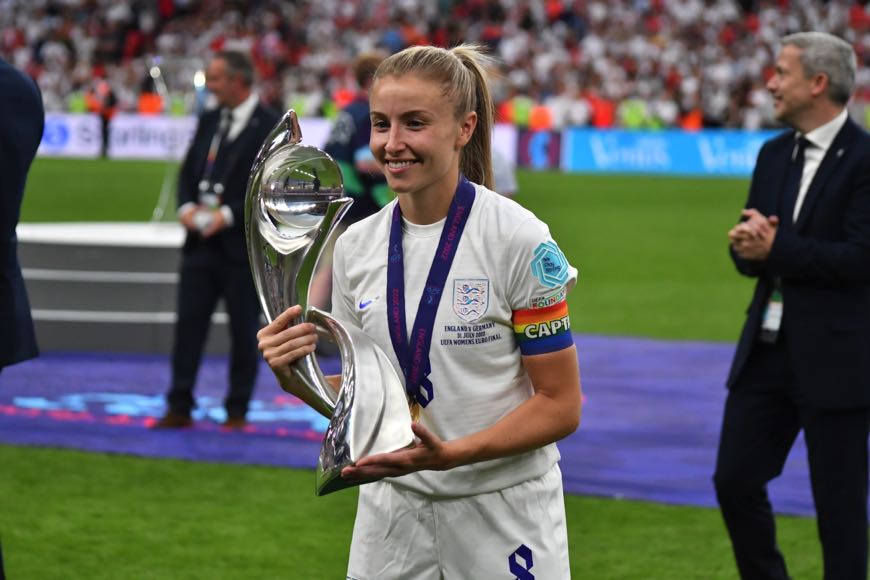
There is a solid argument to be made that the England women’s team might well have done even better than they have done if not for that aforementioned ban on women using the Football Association’s facilities that was brought in in 1921. The first recorded match involving women took place on the seventh of May 1881, with a team from Scotland talking on a side from England in Edinburgh. As a result, therefore, the women were playing the sport on the international stage almost as early as the men were, also playing matches in both Glasgow and Manchester.
The success of that team resulted in women playing in local teams around the United Kingdom, with more than 10,000 people turning up to watch women play by 1895. By the start of the 1920s, that had grown to the point that more than 45,000 people would regularly turn out to watch women play. The ban put paid to any chance of the England women’s team developing at the same rate as the men, which arguably makes the success that they’ve enjoyed in the years since the women’s game was allowed to resume all the more remarkable and noteworthy.
World Cup
 On the first of November 1969, 44 football clubs sent representatives to a meeting at London’s Caxton Hall that started the ball rolling on the formation of the Women’s Football Association. The fact that the FA itself still had a ban in place on women’s football at the time made it seem impotent, but they worked together in order to force the FA to lift the ban, which finally occurred in 1971. It meant that women could play in competitions, such as the Mitre Trophy, which paved the way for England’s women to take part in the Women’s World Cup, which had been formed the year before.
On the first of November 1969, 44 football clubs sent representatives to a meeting at London’s Caxton Hall that started the ball rolling on the formation of the Women’s Football Association. The fact that the FA itself still had a ban in place on women’s football at the time made it seem impotent, but they worked together in order to force the FA to lift the ban, which finally occurred in 1971. It meant that women could play in competitions, such as the Mitre Trophy, which paved the way for England’s women to take part in the Women’s World Cup, which had been formed the year before.
Whilst 1970 had been the first year to feature a tournament known as the World Cup, it was a completion by the name of the Mundialito that became popular in the 1980s, with England winning it in 1985 and then again three years later. It took until 1991 for the first official Women’s World Cup to take place, with China acting as the host nation. England failed to qualify for it, but they did make it to the tournament four years later. They made it out of Group B as runners-up, but were knocked out by Germany in the quarter-finals. They missed out again in 1999, however.
Having previously need to do well in the European Championship in order to qualify for the World Cup, that changed from 1999 onwards, when Europeaan qualifiers were introduced. Sadly, England’s women again failed for make it for the 2003 edition, but made it into the following one comfortably. Having made it out of the group in second once again, the Lionesses were defeated by the United States in the quarter-finals. In 2011, England topped their group, but lost to France on penalties and once again failed to make it any further in the competition than the quarter-finals.
By 2015, England’s women were now qualifying for the World Cup on a regular basis. They finished second in their group behind France, facing Norway in the round of 16 match and winning 2-1. That saw them face Canada in the quarter-finals, which they made it out of for the first time. They went on to lose 2-1 to Japan in the semis, but defeated Germany in the third place play-off. They topped their group in 2019, beat Cameroon in the round of 16 and Norway in the quarter-finals, but lost to the United States again, this time in the semis, losing to Sweden in the third place play-off game.
The 2023 iteration of the tournament was hosted by Australia and New Zealand, with England topping a group that also contained Denmark, China and Haiti. They neat Nigeria on penalties in the round of 16 match, then defeated Colombia 2-1 in the quarter-finals. That resulted in a game against host nation Australia in the semi-final, which England won 3-1. They reached the final of the World Cup for the first time, facing Spain and fancied to beat them. Sadly, a 29th minute goal from Olga Carmona resulted in a defeat, but was their best performance in the competition to date.
European Championship
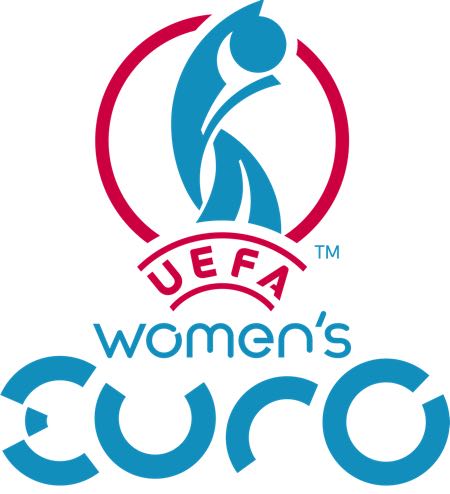 The European Championships can be dated back to 1957, which was when the International Ladies Football Association held a European Championship in West Berlin. Women’s football was still banned in England as well as in the host nation of West Germany, but the ban was widely defied and England won the tournament. The Italian Women’s Football Federation also hosted tournaments for women’s teams, but UEFA were unimpressed and showed little desire to further the women’s game, being openly hostile towards the Italian federation, largely because of a lack of women in the organisation.
The European Championships can be dated back to 1957, which was when the International Ladies Football Association held a European Championship in West Berlin. Women’s football was still banned in England as well as in the host nation of West Germany, but the ban was widely defied and England won the tournament. The Italian Women’s Football Federation also hosted tournaments for women’s teams, but UEFA were unimpressed and showed little desire to further the women’s game, being openly hostile towards the Italian federation, largely because of a lack of women in the organisation.
It took until 1980 for UEFA to decide to launch its own competition for women, with qualification beginning two years later. England were one of the four teams that were part of the inaugural UEFA edition of the European Championships, known as the European Competition for Women’s Football, defeating Denmark in the semi-final but losing to Sweden on penalties in the final in 1984. The next tournament was held three years later, with just four teams taking part once again. This time, England were also knocked out by Sweden, losing 3-2 after extra-time in the semi-final.
Two years on and England failed to qualify, which was also the case in 1991. That was the first time that the competition was known as the UEFA Women’s Championship, however. England women remained absent in 1993, finally making it back into the tournament in 1995. There were still just four teams taking part, with England losing 6-2 to Germany over two legs in the semi-final. In spite of the 1997 tournament seeing eight teams taking part, England weren’t one of them. The tournament was moved to every four years at that point, with England qualifying in 2001.
Sadly, they finished bottom of their group and were knocked out, their only point coming from a draw with Russia, who also ended with a solitary point. They also finished bottom of the group in 2005, but topped the group four years later and defeated hoists Finland in the quarter-finals and the Netherlands after extra-time in the semi-final, losing 6-2 to Germany in the final. After finishing bottom of their group again in 2013, they finished top of it four years later. A win against France in the quarter-finals was followed by a 3-0 defeat to the Netherlands in the semi-final stage.
The 2022 iteration of the tournament, delayed because of the world health crisis the year before, saw England as the host country and top their group. A 2-1 win over Spain after extra-time set up a semi-final against Sweden, which England won 4-0. They then won after Germany in extra-time to win the competition for the first time. In 2025, England defended their trophy win and made history, coming second in the group before a penalty shootout win over Sweden and a 2-1 win over Italy in extra-time setup a final against Spain. It went to penalties, with England winning 3-1.
Structure
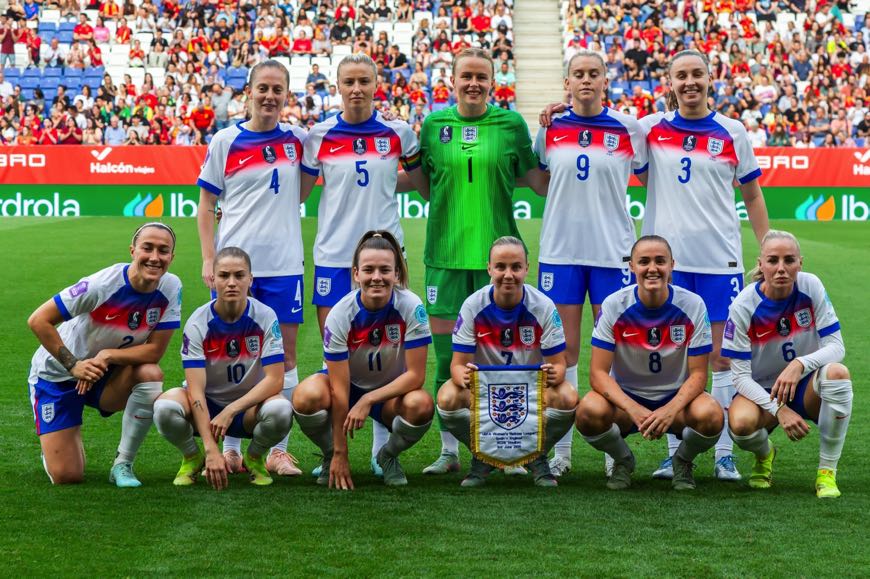
The Football Association took over the running of the women’s national team in 1993, sacking the manager and bringing a new one in. The FA has been responsible for appointing the manager of the Lionesses ever since. Whereas a domestic football team has an Academy that players will look to graduate through, or else improves the squad via the transfer market, the England team sees the players selected by the manager each time there is a match to play. Because the players play across Europe, the manager will often bring in players who ply their trade in the likes of La Liga in Spain.
Captains
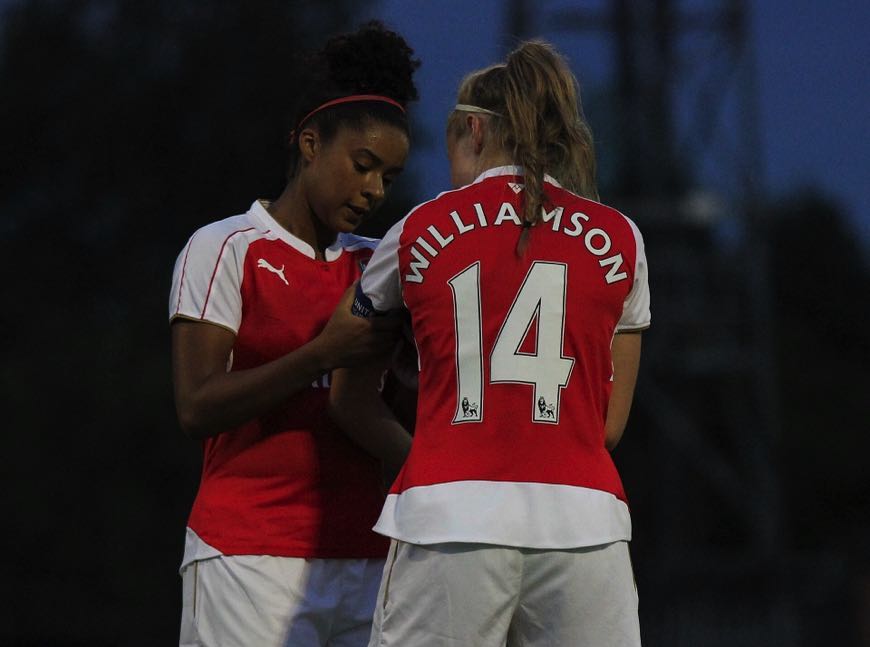
As with the England men’s team, the captaincy role in the Lionesses is one that is expected to carry out numerous duties, including organising events for the purpose of squad harmony. The very first captain of the England women’s team was Sheila Parker, succeeded by Carol Thomas. When the Football Associatiob became involved with the FA as a ‘County Association’ in 1983, Thomas kept her role. Similarly, Gillian Coultard, who was the captain when the team was officially incorporated into the FA in 1993, kept the role until 1997. It isn’t always the best player who is named captain, though.
Instead, the England women’s captaincy is given to the player that the manager at the time imagines will be best-placed to get the most of their teammates. It took until the turn of the millennium for reserve captains to be introduced, with numerous people taking on the role of captain in the event that the person who officially has the armband is absent for some reason. As well as their role off the pitch, the England captain is also expected to carry out official duties on the pitch such as calling the coin toss and interacting with the referee during a match.
Managers
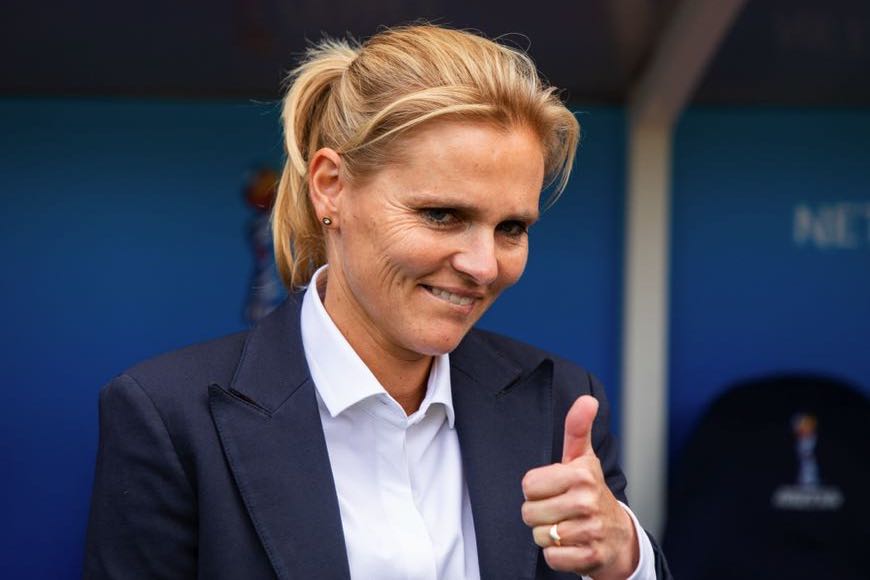
In what might well be about as perfect a representation of the Football Association’s in-built sexism as you can find, the manager of the England women’s team hasn’t always been a woman. In fact, it took until 1998 for a women to be given the role and even then it didn’t last. Hope Powell had seen ten men take on the role before she was appointed, lasting until 2013 before the FA decided that they’d be better off putting another man in charge. Not only was the role given to men, they didn’t even need to be successful managers to take on the position, as proven by Phil Neville’s appointment.
Although Barrie Williams was Welsh when he managed the England women in 1991 and Mark Sampson was also Welsh when he took on the role between 2013 and 2017, the majority of England women’s managers have been English and all but two have been from the British isles. It took the appointment of Hege Riise as caretaker manager in 2021 for that to change, with the Norwegian taking charge for three games before Dutch manager Sarina Wiegman was given the job. There is, perhaps, something in the fact that Wiegman is the most successful manager of either gender’s national team.
Grounds

The Lionesses do not have an official home ground that is dedicated to their use, with numerous locations around England being used to host games. They have played at the King Power Stadium in Leicester, for example. Whilst St. George’s Park is where they train, as with the men’s team, Wembley is only used on occasion. If it is felt that it is a big match, the women will use Wembley Stadium, but this isn’t the de facto home in the same way as it is for the men’s team. They have also played games at grounds such as Norwich City’s Carrow Road, depending on what Wembley is being used for.
